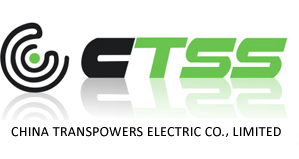Home >> News Center
Cummins Power Generation, Inc., Provides Electrical Generator for Major Demonstration Project at the
2010-9-6 Power-Generator-Industry Generator News
The Energy & Environmental Research Center (EERC) atthe University of North Dakota, in partnership with Cummins Power Generation, Inc., has begun a project todemonstrate the production of heat and power from high-moisture biomass.Cummins Power Generation, a world leader in the design and manufacture of powergeneration equipment, headquartered in Minneapolis, Minnesota, has provided theelectrical generator for the project, a key component in producing 35–40kilowatts of power a day, enough for one home.
“Weare extremely pleased by the level of commitment Cummins Power Generation hasmade to this project and want to express our thanks to Cummins for providingthe technology necessary to make this demonstration possible,” said EERC Director Gerald Groenewold. “A system such as thiswill provide a first step toward providing commercial entities the motivationto utilize opportunity fuels for energy generation.”
“TheCummins generator, which normally runs on natural
TheEERC’s gasification unit can convert a range of fuels, such as forestry,agricultural, and industrial biomass waste; animal waste; waste plastics; andrailroad ties or cable poles as well as a range of coals, into clean syngas.Together, the Cummins and EERC technologies will work in harmony as a gasification-basedcombined heat and power technology, with a variety of applications.
“Dependingon the circumstances, this combined technology could help industries, farms,and many waste-producing facilities in meeting their own energy needs while utilizingfuels that have disposal costs and liabilities. Users of the technology wouldalso be able to sell green energy back to the power grid, which would provide afinancial benefit,” said Patel.
Anotheradvantage of a combined heat and power system compared to a typical internalcombustion generator operating on fossil fuel is its improved emissionprofiles. The physical properties of the biomass feedstocks, such as theirorigin, storage, and aging, can often vary. That variation can affect theperformance and, ultimately, impact stack emissions when used in a typical internalcombustion generator. The synergistic and seamless integration of an advancedgasifier and the engine generator will overcome this limitation and achieveenvironmentally acceptable emissions. The project aims at demonstrating thisfact.
The outcome of the project will lead to thedevelopment and demonstration of engine performance on syngas, producing datafor environmental permitting and providing strategies for achieving emissionlevels that meet current and future environmental regulations, which arecritical for successful commercialization of combined heat and powertechnologies.

 Hydro Turbine Generator Units
Hydro Turbine Generator Units
